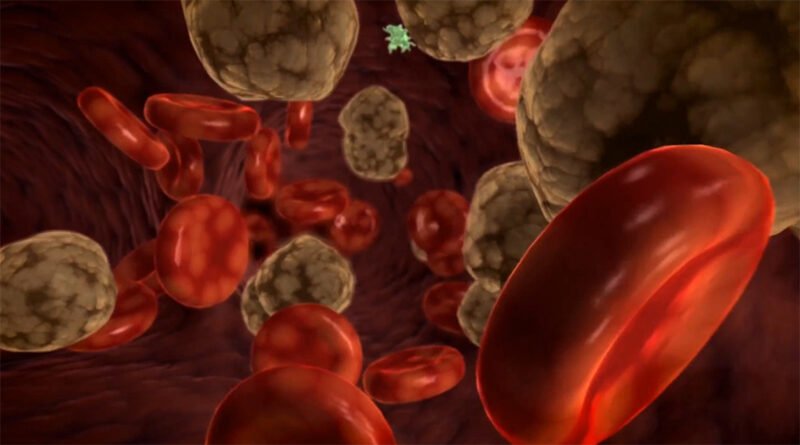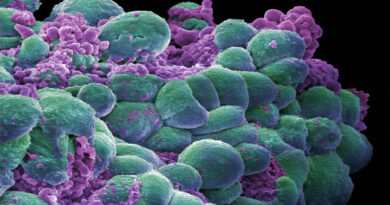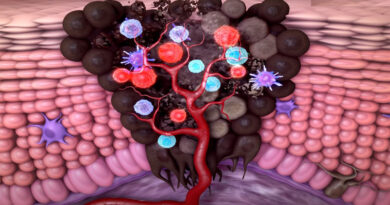Blood Cancer
Last Update on September 15, 2022
| Types | Causes | Symptoms | diagnoses | Treatments | Survival rates |
Blood cancer also known as hematologic cancer, is start in the bone marrow, where the blood cells produce. Blood cancer develops when abnormal blood cells begin to grow uncontrollably and block the operation of healthy blood cells, which are responsible for fighting off infections and generating new blood cells.
Blood cancer has an impact on the development and operation of your blood cells. The majority of these cancers begin in the bone marrow, which makes blood. Red blood cells, white blood cells, or platelets can be produced from stem cells in your bone marrow as they mature and develop.
The uncontrolled growth of an unusual type of cell interrupts the process of regular blood cell growth in most blood cancer. These cancerous or abnormal blood cells prohibit your blood from carrying out many of its activities, such as preventing infections or avoiding life-threatening bleeding.
Blood cancer is started by changes (mutations) in the DNA of blood cells. The blood cells start to behave uncommonly as a result of cancer. These changes are commonly related to factors of uncontrollable. They are not major genetic disorders because they occur during the lifespan of a person.
1. Types of Blood Cancer:
There common three different types of blood cancer:
- Leukemia
- Lymphoma
- Myeloma
- Myelodysplastic Syndromes (MDS)
- Myeloproliferative Disorders (MPDs)
- Leukemia: A blood cancer called leukemia starts in the bone marrow and blood. It happens when the body produces an excessive number of abnormal white blood cells, interfering with the production of red blood cells and platelets by the bone marrow.
- Lymphoma: Hodgkin lymphoma is a blood cancer that starts from lymphocytes, which are lymphatic system cells. The Reed-Sternberg cell, an abnormal lymphocyte, is a defining characteristic of Hodgkin lymphoma.
- Myeloma: A cancer of the plasma cells called myeloma. White blood cells called plasma cells help your body develop antibodies that fight infections and disease. Myeloma cells impact the human body to stop producing antibodies normally. Without antibodies, the immune system is become weak and making you more vulnerable to infection.
- Myelodysplastic Syndromes (MDS): These cancers develop when some bone marrow-derived blood stem cells do not develop into healthy blood cells.
- Myeloproliferative Disorders (MPDs): Changes in the bone marrow, the tissue that produces blood cells, and stem cells are what lead to MPDs, which are blood malignancies. The body produces an excess of blood cells as a result of these alterations. Any sort of blood cell, including white, red, and platelets, may be present in excess.
- Non-Hodgkin lymphoma: Non-Hodgkin lymphoma is a blood cancer that starts from lymphocytes, a type of white blood cell that supports the ability of the body to fight against infectious diseases
- Multiple Myeloma: Blood cancer known as multiple myeloma starts in the plasma cells of the blood, a kind of white blood cell produced in the bone marrow.
- Moreover, there are less common cancers of the blood and bone marrow as well as related diseases, such as:
- Myelodysplastic syndromes (MDS): These are uncommon ailments that could be brought on by harm to bone marrow’s blood-forming cells.
- Myeloproliferative neoplasms (MPNs): When the body overproduces white blood cells, red blood cells, or platelets, these rare blood cancers can develop. Essential thrombocythemia (ET), myelofibrosis (MF), and polycythemia vera are the three major subgroups (PV).
- Amyloidosis: This uncommon disease is not a type of cancer and is defined by the development of an unusual protein called amyloid. But it is closely connected with multiple myeloma.
- Waldenstrom macroglobulinemia: This is an uncommon type of B cell-initiated non-Hodgkin lymphoma.
- Aplastic anemia: This uncommon disease, which only responds to a bone marrow transplant, is caused by damaged essential stem cells.
2. Blood Cancer causes:
Although the actual cause of blood cancer is mostly unknown, there are some factors that may increase your risk of getting blood cancer, including:
- Age
- Ethnicity
- Family history
- Smoking
- History of other blood cancers
- Weight loss
- Radiation or chemical exposure
- Weak immune system
- History of cancer treatment
- Some health conditions and treatments
- Gender
- Getting to industrial chemicals such as benzene
- Depending on the type of blood cancer, these factors influence risk differently.
3. Blood Cancer Symptoms:
There are several symptoms that people with blood cancer may experience, such as:
- Weight loss
- Headaches
- Bruising or bleeding
- Abdominal discomfort
- Lumps or swellings
- Shortness of breath
- Frequent infections
- Drenching night sweats
- Infections that are persistent
- Fever at 37.5°C or above
- Rash or itchy skin
- Pain in bones, joints, or abdomen
- Tiredness that doesn’t improve patents proper sleep (fatigue)
- Paleness (pallor)
4. How is blood cancer diagnosed?
A medical assessment is frequently the first step in making a diagnosis in order to assess your general health. Moreover, to review the medical history of patients, the doctor will check your body and lymph nodes to identify any symptoms of infection or bruises.
The diagnosis of blood cancer may be made using many different types of screening testing and methods. Depending on the sort of blood cancer you may have, you may require certain things. Your care team might advise testing and work with you to diagnose the situation after reviewing all the facts.
Blood cancer can be diagnosed by:
- Biopsy
- Imaging scans
- Blood tests
4.1. Biopsy Blood cancer tests:
A biopsy is a procedure that collects cell samples for a pathologist to examine in a lab. You could require a lymph node biopsy to collect a sample of lymph tissue or a complete lymph node for some types of blood cancer, such as lymphoma.
Certain types of blood cancer can be identified through testing your bone marrow, which produces blood cells. To perform a biopsy test, a small sample of bone marrow, blood, and bone is get from either the hip bone or the breastbone. To get a test sample, doctors perform a technique known as a bone marrow aspiration. A lab examines the sample to identify the abnormal cells or irregularities in the makeup of the genetic materials.
4.2. Blood cancer Imaging scans tests:
For some types of blood cancer, imaging scans are more beneficial than for others. Leukemia, a blood cancer that doesn’t produce visible tumors, is typically not diagnosed with a scan, though it may detect an enlarged lymph node, a common indication of lymphoma. Scan results, however, may reveal whether cancer has spread to other bodily regions.
List of imaging tests:
- Computed tomography (CT) scan
- Magnetic resonance imaging (MRI)
- Positron emission tomography (PET) scan
- X-ray
- Ultrasound
During biopsies, certain scans are performed to help determine the area that has to be examined.
4.3. Blood tests for blood cancer:
A complete blood count (CBC) displays the number of different blood cells, including platelets, red blood cells, and white blood cells.
Tests of your blood’s chemistry measure the concentrations of various chemicals. For instance, abnormal protein levels may reveal information about your illness. Your blood calcium level may be examined by doctors if multiple myeloma is considered to be present. An enzyme called lactate dehydrogenase (LDH) may be examined for signs of lymphoma.
5. Blood cancer Treatments:
The type of cancer, your age, how quickly it is growing, where it has spread, and other factors all affect how blood and bone marrow cancers are treated. The following are some common blood cancer therapies for leukemia, lymphoma, and multiple myeloma:
Stem cell Transplantation: Healthy blood-forming stem cells are injected into the body during a stem cell transplant. The bone marrow, circulating blood, and umbilical cord blood can all be used to collect stem cells.
Chemotherapy: Chemotherapy uses anticancer medications to prevent the development of cancer cells in the body. Blood cancer chemotherapy occasionally involves administering a number of medications in a predetermined order. A stem cell transplant may also be followed by this therapy.
Radiation therapy: Radiation therapy can be performed to treat pain or discomfort as well as to kill cancer cells. It might also be used before a stem cell transplant.
6. Blood cancer patients’ survival rates:
The future for blood cancer differs depending on the type as well as other factors like your general health, age, and treatment response.
According to the Surveillance, Epidemiology and End Results (SEER) Program of the National Cancer Institution report, the five-year relative survival rate for leukemia, which measures the percentage of patients who were still alive five years after screening tests for cancer, is 65 percent. This statistic has significantly increased over the past 50 years. Other prices are:
- Non-Hodgkin lymphoma: 73.2%
- Hodgkin lymphoma: 88.3%
- Myeloma: 55.6%
Remember that these survival percentages are predictions that are based on historical information and previous treatments. Your experience might be even more encouraging due to medical advancements.



